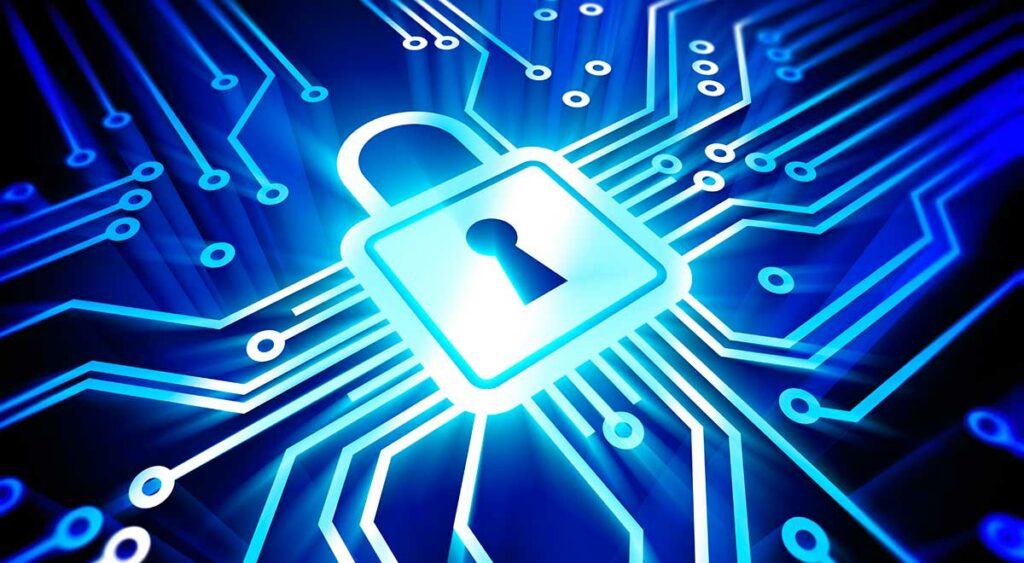
Cybersecurity of video surveillance systems. How to protect information
Cybersecurity of video surveillance systems. How to protect information
Technological advances in digital video surveillance mean that Internet-connected devices (IP cameras and related equipment) are at risk of cyber attacks. And since 2016, cybersecurity issues are regularly brought up to the public. The starting point in this matter is considered to be the massive attack on devices by the Mirai botnet, including video surveillance equipment, in the fall of 2016. At that time, not only numerous users of the Smart Home system suffered, but also companies such as Netflix, Twitter, Spotify. Since then, information system security has become an extremely important topic. This is what our article is about.
Weak spots in video surveillance systems
Practical experience says that the spots for cyber attacks in video monitoring systems are:
- channels or lines of communication. Here we are talking about the connections between hardware, server and cloud, server and third party hardware. Attackers can use the method of interception, obstacles in data transmission, deliberate damage or alteration of information;
- data bank, including archive recordings. Here, the loss of files, deliberate damage to the archive, substitution of material, as well as unauthorized viewing of information are possible;
- equipment for video recording. Here we can talk about interference with the equipment software settings, as well as about illegal seizure of control and unauthorized viewing of information.
What do you need to defend against?
Cybercriminals are not interested in video surveillance systems themselves. They are seen as testing grounds (to hone skills) or as an intermediary (for hacking another organization).
You need to protect yourself from the human factor, which is divided into intruders and unskilled specialists, as well as from malicious software.
Information protection measures
In most cases, security measures for a video surveillance system are to regularly check the equipment with tests, refuse universal passwords, as well as limit the number of users and reduce physical access. Let us go one-by-one.
Penetration tests
A visual inspection of the equipment will never reveal the weak link of a video surveillance system. It is necessary to carry out program analysis in the following areas:
- testing devices. The security of the IP system is evaluated. All elements, without exception, must be protected from cyber attacks;
- testing the protocol. Here we are talking about the secure exchange of data with elements in the network, including the encryption reliability of transmission and impossibility of intercepting information during transmission;
- software testing. Professional analysis is performed on buffer overflows, account reliability, and firmware updates.
Abandoning default password and login
Using default passwords is the #1 reason for vulnerability in any hardware. For security purposes, you need to install complex keys from the first days of using the equipment and creating a cyber security system. Naturally, there is no 100% guarantee against hacking, however, the more complex and less predictable the password, the less likely it is that attackers will be able to gain access.
Principle of minimum rights
The more people have privileged access to the system, the more likely cyber threats are. Privileged access means high-level access to IP video surveillance settings and data. It is necessary to limit the rights of access and control of the system to the minimum possible number.
Ways to ensure cybersecurity in video surveillance
All methods of protecting video surveillance systems can be classified as follows:
- software protection (built-in). It can be a set of certain functions provided by the software manufacturer. For example, traffic encryption, protection against brute-force attacks, password protection of an exported archive, etc.
- protection at the level of switching equipment. To secure the link, you only need to install control switches with encryption, auditing, and limited access.
- user protection of video surveillance equipment. The effectiveness of this method is determined by the competence and conscientiousness of the installer. They are obliged to perform the following actions: change passwords and default settings, disable those functions that are not used, keep software up-to-date, etc.
Protection in the Faceter service
The following review has been written about the best video surveillance services with recording. From the article you will learn that the leading provider of cloud services is the Faceter international company.
Faceter‘s smart video surveillance technology is based on blockchain and a decentralized network of miners. At the same time, the technology is 100% anonymous and uses the capabilities of ultra-precise neural networks to differentiate tasks. Therefore, confidential data is always processed in a completely trusted environment, and all personal video recordings are sent to a decentralized network. Only the owner of the system with a personal code can access the materials.
Get detailed information on Faceter’s smart video surveillance capabilities here.
To build a home or business security system on your own, read the article “Cloud video surveillance: 5 steps of building a system from scratch“.
Instead of a conclusion
Information security products, as an independent software designed for video surveillance systems, are rare. Therefore, it is advisable to focus on choosing a reliable provider of video monitoring services, as well as following the manufacturer’s recommendations when installing hardware and software. To get the most of your hands-on knowledge of cloud video surveillance, read the article “Cloud video surveillance system: 6 tips from an expert“.














